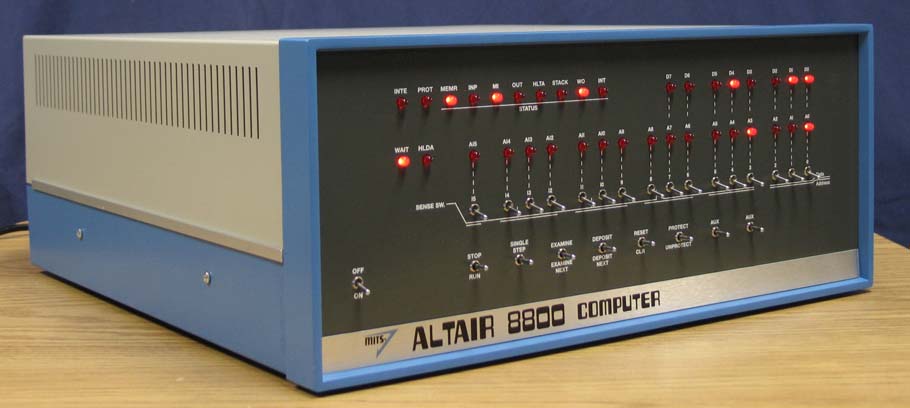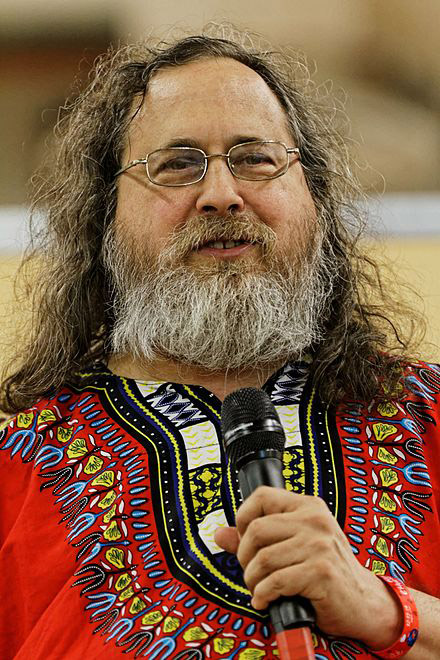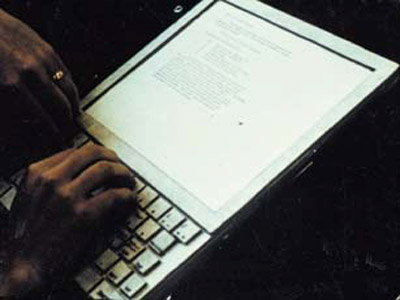Open Source Thinking
Description
Week 2: January 25 – 31
We will take a close look at the history and concept of open source thinking, and how peer-to-peer methods of collaboration, openness, and transparency can be applied to the studio arts. Of particular interest is the cultural impact of open source methods, how techniques that encourage free sharing of information and the peer-to-peer process might inform and enrich our creative practice as artists.
Assignments
Due next week: February 1
Reading
Packer R. “The Third Space,” (2014) in Reportage from the Aesthetic Edge.
Research Critique
Each student will be assigned a work to research and critique from the following list:
- Sherry Rabinowitz & Kit Galloway, Hole in Space, 1980
- Paul Sermon, Telematic Dreaming, 1993
- Annie Abrahams, The Big Kiss, 2007
- Second Front, Grand Theft Avatar, 2008
Write short 250 word essay about your assigned work, the artist(s). Incorporate the reading (see above), as relevant, into your research post, using at least one quote to support your own research and analysis. Note that each piece is described in next week’s Syllabus Page.
The goal of the research critique is to conduct independent research by reviewing the online documentation of the work as provided, as well as visiting the artist’s Website, and googling any other relevant information about the artist and their work. You will give a presentation of your research in class and we will discuss how it relates to the topic of the week: The Third Space
Here are instructions for the research critique:
- Create a new post on your blog incorporating relevant hyperlinks, images, video, etc
- Be sure to reference and quote from the reading to provide context for your critique
- Apply the “Research” category
- Apply appropriate tags
- Add a featured image
- Post a comment on at least one other research post prior to the following class
- Be sure your post is formatted correctly, is readable, and that all media and quotes are DISCUSSED in the essay, not just used as introductory material.
Outline
Social Broadcasting

A review of the concept of social broadcasting and our first Micro-Project. Take a look at the Facebook Live Video Wall to better understand the difference between traditional and social broadcasting, and how it relates to our study of open source thinking.
Journal
Review of journal use from Week 1.
Flickr Feed
First, I want everyone to join the OSS Flickr Group and upload an image so that it appears on our class feed (see the top of the home page of the class site. Flickr is an image repository that can be used to store and integrate images with WordPress.Here are the steps for joining the Flickr Group:
- Got to Flickr.com and SIGN UP for an account if you don’t have one
- Go to our OSS NTU Group Page and click on the + Join Group button
- They will show up on the Invite Page where I will accept new members
- Create a screenshot image from your tele-stroll
- Click on the Upload button in the upper right hand corner and add to Flickr
- Select the image, click on “Add to Groups” in the left sidebar, select Open Source Studio NTU, and then “Upload One Photo” in upper right corner
- The image should then show up on our feed, as well as the group page.
- If the image doesn’t show up go to the OSS NTU Group Page and click on “Add Photos,” look for the image you uploaded (it should be first), select the image, and click on “Add to Group”
- Now check to see if it is added to the group and the feed
We will be using the Flickr feed throughout the semester to post work we are doing that represents each week of the semester. We ask the question: how does this collective sharing and documentation of imagery relate to our study of the Art of the Social Practice?
Review of Micro-Project #2: Tele-Stroll
We will look at a few projects and analyze the concept of the third space, how we negotiate interaction from remote locations, and how we can use “social broadcasting” for creative purposes. Students will describe the experience and quality of engagement, as well as breakdowns and disruptions that are part of our everyday experience of the network.
Elizabeth and Ros
Posted by Ros Farzana on Wednesday, 24 January 2018
Zhen Qi and Daphne T.
Francesca and Lingtan:
Posted by Yue Ling Tan on Tuesday, 23 January 2018
Posted by Francesca Nio on Saturday, 20 January 2018
Jasmine and Nadia
Posted by Jasmine Foo on Tuesday, 23 January 2018
Bala and Felicia
Posted by Balachander Prashanthi on Sunday, 21 January 2018
Bella and Daphne N.
Posted by Daphne Natimin on Tuesday, 23 January 2018
Daphne N. and Cecilia
Posted by Daphne Natimin on Tuesday, 23 January 2018
Xiang Rei and Jocelyn
Francesca and Yue Ling
Posted by Yue Ling Tan on Tuesday, 23 January 2018
Open Source Studio Best Practices
Review of best practices for posting in OSS. I will present a few of the posts and we will look at techniques that will help us work more collaboratively and resourcefully in the research, documentation, and sharing of our work.
- Should we turn off email notifications?
- How to best use images. We are not writing magazine articles, but essays for learning and scholarship. Images need to be more than graphically interesting, but should relate to the subject matter and referenced in the text.
- Don’t use Assignment X as a title, but rather the topic of the assignment, such as “Open Source,” something that gives the reader a better clue as to what the essay is about.
- Be sure and make your essays more visual, use images to communicate information and concepts, not just illustrations.
- Don’t copy whole sentences from the text without properly quoting.
- Use of blockquotes
- Use of linked images
- Turn in your work by the morning of the due date so everyone has time to read one essay and comment
- When you reference an essay, be sure and use the FULL name of the author and anyone you discuss and the FULL name of the essay
- Be sure and ALWAYS use a featured image and tags.
- Your post/theme should be readable and clear with good design sensibility, images large and readable, paragraphs not too long, and quotes and images to make it more dynamic and interesting and informative.
- After some thought, I would like to discourage the use of memes as visual references, unless we are actually talking about memes.
- Make sure your categories hierarchical layout is set to “show hierarchical,” there is at least one student who turned it off. It makes it harder to find assignments for professors.
Here are some good examples of student work:
Bala
En Cui
Introduction to Open Source Thinking
Let’s begin with a discussion of open source thinking and its practices with some specific examples. Open source has a long history and we will discuss it in detail in connection with the readings below. First, let’s take a look at a few of these videos that came from student research. This is the spirit of open source!:
First, what makes Wikipedia open source, what are the benefits of an open source encyclopedia, and what are the drawbacks? Why would an open source repository of information be preferable than a proprietary one, which is what many of us grew up with! And what is the difference between open source and proprietary?
Wikipedia Art
Here is an artwork by Nathaniel Stern and Scott Kildall called Wikipedia Art. Here is a short video trailer of the project:
“A collaborative project initiated with Scott Kildall, Wikipedia Art was originally intended to be art composed on Wikipedia, and thus art that anyone can edit. Since the work itself manifested as a conventional Wikipedia page, would-be art editors were required to follow Wikipedia’s enforced standards of quality and verifiability; any changes to the art had to be published on, and cited from, ‘credible’ external sources: interviews, blogs, or articles in ‘trustworthy’ media institutions, which would birth and then slowly transform what the work is and does and means simply through their writing and talking about it. Wikipedia Art, we asserted at its creation, may start as an intervention, turn into an object, die and be resurrected, etc, through a creative pattern / feedback loop of publish-cite-transform that we called “performative citations.” Despite its live mutations through continuous streams of press online, Wikipedia Art was considered controversial by those in the Wikipedia community, and removed from the site 15 hours after its birth. But the debate and discussion there, and later in the art blogosphere and mainstream press, produced a notable work after all. Various communities still “transform what the work is and does and means simply through their writing and talking about it,” despite its absence from Wikipedia. The “work” has since lived as a myriad of substantiated remixes at the Venice Biennale, a performance in New York City, a book chapter, several real-world installations in Berlin, London, and Vancouver, and more. It continues to question epistemological and material occurrence in the Communication and Information Ages.” – from the project Web page
The Wikipedia Art project challenges the authenticity of open source practices, such as Wikipedia, where believe information to be verified and true with citations and references. However, how do we really know if those citations are true, much as how do we know if the news we read on social media is fake?
Thus, a group of artists created a Wikipedia page as an art project to test the idea of open sourced authenticity, by requiring that anyone who contributes to the Wikipedia Art page to produce citations, or what they called “performative citations.”
This project questions whether or not we can trust online information. Do you believe everything you read, even when it is supposed to be true, such as Wikipedia? Does open source expand our ability to create and document knowledge, or does it open the door to misinformation. This is an important question we must ask in regards to our study of open source thinking.
Readings
(1) Vaidhyanathan, Sida (2005) “Open Source as Culture-Culture as Open Source,” The Social Media Reader. New York: New York University Press, 2012

Some questions concerning open source ideology to consider:
- How does open source challenge the status quo: the proprietary model of cultural and technological production?
- Since the history of technology is largely open source, why do we now have difficulty understanding the value of open source?
- Why do we think of open source as “utopian,” “free-spirited,” “anarchic,” or even “impracticable?” What is the fear of open source in an economically-driven society that values and protects proprietary methods?

- Why is it that the author finds the copyright of software, a program that is used to make something, as opposed to say books or music which are already made, to be problematic?
- What was the impact of Bill Gates’ decision to “sell” software in 1976, when up until that time it was strictly the domain of hackers and software enthusiasts and hobbyists who wrote software purely for purposes of sharing and trading.

“Strong intellectual property rights inefficiently shrink the universe of existing information inputs that can be subject to this [software development] process.”
“Regulators concerned with fostering innovation may better direct their efforts toward providing the institutional tools that would help thousands of people to collaborate.”
– Yochai Benkler, Professor of Entrepreneurial Legal Studies at Harvard Law School
- How might proprietary or “elite” control of technology be limiting or constraining to development and innovation?
- Why do you think that scientists such as Richard Stallman, an American free software movement activist and programmer, founded the Free Software Foundation in the 1980s, was so frustrated that he couldn’t freely share and distribute software?


- What does the emergence of “peer-production” hardware/software such as the World Wide Web or Wikipedia or the operating system Linux (a threat to Microsoft) tell us about the power of open source ideology? And what is meant by “peer-production?” Why are so many activist software enthusiasts drawn to Linux and other open source platforms?

- If it is not about monetary gain, why exactly do programmers engage, sometimes defiantly, in open source projects that involve peer production? In other words, what is the creative benefit from avoiding proprietary ownership and copyright laws?
- What is “open source journalism” and what are the implications of participating in the global information ecosystem? Are well all open source journalists and artists and designers using OSS?
- The following statement is essentially this class and it’s focus on the art of the social practice is all about:
“Creativity as a social process is the common denominator… the act of creation is a social act… a node in a network of relations.” – Vladimir Hafstein, associate professor of folkloristics and ethnology at the University of Iceland
- How do the concepts and ideologies of open source thinking impact and shape our study and creation of art?
- How might OSS serve as a platform for peer production that will help catalyze our work, both collectively and individually?
- Do you think the world might be a better place if there were more emphasis on open source thinking, in which cultural production is intended for the common good rather than personal gain?
Packer, Randall, Open Source Studio, IEEE Spectrum, 2015
- How does PROCESS into the ongoing artistic act and how does PROCESS play out in OSS, our very own virtual studio of open source thinking!
- How does the concept of the Happening, as pioneered by artists such as Alan Kaprow, make art a more social, participatory activity?

Here is a performance work by Miriam Abramovic, Rhythm 0, which also follows principles of open source (much like Cut Piece by Yoko Ono):
Douglas Engelbart proselytized the adoption of collaborative online space for research, work, and learning, stating in 1963:
“Our goal is to augment the human intellect … by organizing his intellectual capabilities into higher levels of synergistic structuring.”
What did he mean by augmenting human intellect?

What did Alan Kay mean by the idea of the meta-medium?

Way of Open Source
One of the fundamental concepts of open source is the acknowledgment that creative inspiration comes from social interaction and peer-to-peer methods of collaboration. Do you agree? Do you get creative energy from working and collaborating with others?
The Open Source Artist
- Why is the act of creation a social act, rather than a solitary one? In other words, how is art a social activity?
- How do the concepts and ideologies of open source thinking impact and shape our study and creation of art? For example, what about sharing one’s work such as Richard Foreman’s Ontological-Hysteric Theater. How does this practice correlate with social media?
- How is OSS, based on open source thinking, a collaborative medium? How does it change the paradigm of how work is created for a studio art class?
How do artists use techniques of appropriation to create collage work with electronic media.
- Nam June Paik, Global Groove (1973)
- Mark Napier, The Shredder (1998)

In Mark Napier’s The Shredder, the artist designed a custom browser that deconstructs or “shreds” Websites, providing the viewer the means to appropriate and generate their own collaged abstraction using the Web as a vast open source repository. The artist has essentially created a tool that resituates the viewer as the protagonist for real-time appropriation. What does this appropriation, remix, and collage reveal about the nature of the Web?
- Mark Amerika, Remix The Book (2012)
Mark Amerika (pseudonym), a pioneering digital artist, published remixthebook [vi] (2012) with a curated Web exhibition inviting artists to appropriate digital remixes of his book in forms that range from experimental sound to spoken word to video. Amerika suggests that his remixthebook project could be considered
“an open content platform for others to use as source material for their own art work, literary creations, 21st century multimedia theory, and/or innovative coursework.”
How does remixthebook change the way we experience a book? How does the book merge theory and practice?
Artists also use open source sharing to make research available through their Websites and blogs. Artists sites by Jon Cates:

Mark Amerika as well as my own Reportage from the Aesthetic Edge, provide a window that gives open access to the studio and artistic process in which the artists are spontaneously testing ideas through experimental writing.
In reviewing the histories of artists and technologists engaged in open source ways of working and thinking in the digital age—despite the corporate influence of technology companies, social media and big data—it appears there is a compelling path toward open, non-hierarchical approaches to peer-topeer cultural production. This is evident with the surge of independent journalists, bloggers, mailing list communities, and Internet broadcasters who tag, disseminate, and share their unfiltered communications throughout the network. Perhaps the idea of netizens (or netartizens) constitutes the greatest manifestation of the open source studio, in which we are all potentially co-collaborators in the global information culture.
In our globally connected world, is it useful for artists to open up their work and process to an online audience? How so?